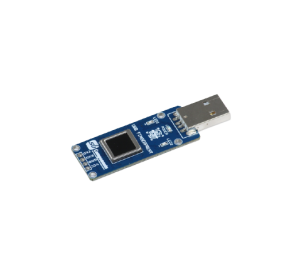Difference between revisions of "USB-Fingerprint"
From SB-Components Wiki
| Line 39: | Line 39: | ||
* Enable Serial Interface for Raspberry Pi (Not required in case of windows) | * Enable Serial Interface for Raspberry Pi (Not required in case of windows) | ||
* Open a terminal and run the following commands to enable I2C and Serial: | * Open a terminal and run the following commands to enable I2C and Serial: | ||
| − | sudo raspi-config | + | <source lang="shell"> sudo raspi-config </source> |
* Choose Interfacing Options -> Serial-> | * Choose Interfacing Options -> Serial-> | ||
Set "would you like a login shell to be accessible over serial?" --> No | Set "would you like a login shell to be accessible over serial?" --> No | ||
| Line 45: | Line 45: | ||
* Install required dependency by running the below command | * Install required dependency by running the below command | ||
| − | sudo apt-get install python3-pil python3-pil.imagetk | + | <source lang="shell"> sudo apt-get install python3-pil python3-pil.imagetk </source> |
* Connect usb fingerprint on raspberry Pi usb port. | * Connect usb fingerprint on raspberry Pi usb port. | ||
* Now open terminal and run the below command to download/ clone usb fingerprint repository | * Now open terminal and run the below command to download/ clone usb fingerprint repository | ||
| − | git clone https://github.com/sbcshop/USB-Fingerprint.git | + | <source lang="shell"> git clone https://github.com/sbcshop/USB-Fingerprint.git </source> |
(It will clone the repository inside home/pi location.) | (It will clone the repository inside home/pi location.) | ||
* Enter downloaded repository location by typing below command. | * Enter downloaded repository location by typing below command. | ||
| − | cd USB-Fingerprint | + | <source lang="shell"> cd USB-Fingerprint </source> |
* Now start the GUI of USB fingerprint by running the below command. | * Now start the GUI of USB fingerprint by running the below command. | ||
| − | python3 fingerprint_GUI.py | + | <source lang="shell"> python3 fingerprint_GUI.py </source> |
* Type COM port and Baud Rate as ( default is 9600) from above GUI ("/dev/ttyACM0" in case of default connection), | * Type COM port and Baud Rate as ( default is 9600) from above GUI ("/dev/ttyACM0" in case of default connection), | ||
| Line 64: | Line 64: | ||
Note: In case of error while opening the COM port run the below command to check connected devices on USB port.(connect and remove to check it) | Note: In case of error while opening the COM port run the below command to check connected devices on USB port.(connect and remove to check it) | ||
| − | + | <source lang="shell"> ls -l /dev/tty* </source> | |
== Resources == | == Resources == | ||
''' Github ''' | ''' Github ''' | ||
* [https://github.com/sbcshop/RFID-Breakout Source Code] | * [https://github.com/sbcshop/RFID-Breakout Source Code] | ||
Revision as of 04:53, 27 October 2021
RFID Breakout
USB Fingerprint board is a board comprise of an onboard Nuvoton MCU with an on-chip crypto-accelerator, Cortex-M23 TrustZone, and XOM facilities in a USB form-factor. A user can use the USB Fingerprint board with a PC or micro-controller with the Baud rate of 9600 bps or USB 2.0 full speed over the serial UART interface.
Features
- USB / UART Interface
- Capacitive Contact Technology
- On Chip-Crypto Accelerator
- High-Speed UART Interface
- Register up to 24 Fingerprints
- Nuvoton MCU
- Cortex-M23 Trust zone
- High-performance fingerprint algorithm
- Register at most 24 fingerprints
- High comparison speed
- Matching mode 1:1; 1:N
Specifications
- Sensor - Capacitive Chip Sensor
- Active sensing area - 8.8 x 8.8 mm
- Scanning speed - 25 Frame/ sec
- Image resolution - 508dpi
- Gray level - 8 bits/pixel, max 256 grayscales
- Image ratio to width - 1:1
- Operating Temperature - (20 ~ 60 ℃)
- Operating humidity - 0 ~ 90% Non-Condense
- Matching Mode - 1:1; 1:N
- Sensor Coating surface color - Black Matte

Installation
Raspberry Pi
- Enable Serial Interface for Raspberry Pi (Not required in case of windows)
- Open a terminal and run the following commands to enable I2C and Serial:
sudo raspi-config
- Choose Interfacing Options -> Serial->
Set "would you like a login shell to be accessible over serial?" --> No Set "would you like the serial port hardware to be enabled?" --> Yes
- Install required dependency by running the below command
sudo apt-get install python3-pil python3-pil.imagetk
- Connect usb fingerprint on raspberry Pi usb port.
- Now open terminal and run the below command to download/ clone usb fingerprint repository
git clone https://github.com/sbcshop/USB-Fingerprint.git
(It will clone the repository inside home/pi location.)
- Enter downloaded repository location by typing below command.
cd USB-Fingerprint
- Now start the GUI of USB fingerprint by running the below command.
python3 fingerprint_GUI.py
- Type COM port and Baud Rate as ( default is 9600) from above GUI ("/dev/ttyACM0" in case of default connection),
and click on connect button to start communication with fingerprint sensor.
Note: In case of error while opening the COM port run the below command to check connected devices on USB port.(connect and remove to check it)
ls -l /dev/tty*
Resources
Github
